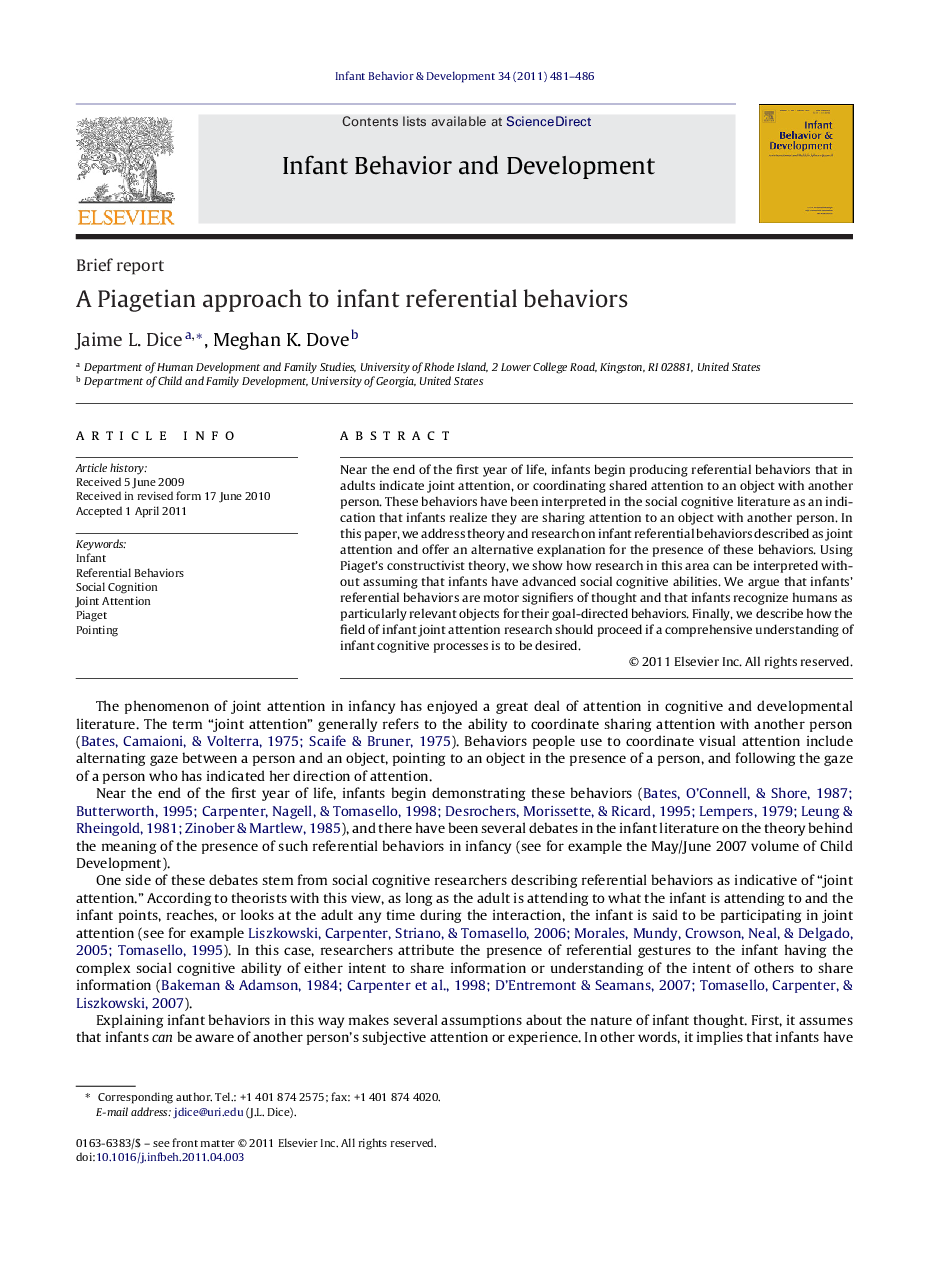| Article ID | Journal | Published Year | Pages | File Type |
|---|---|---|---|---|
| 917324 | Infant Behavior and Development | 2011 | 6 Pages |
Near the end of the first year of life, infants begin producing referential behaviors that in adults indicate joint attention, or coordinating shared attention to an object with another person. These behaviors have been interpreted in the social cognitive literature as an indication that infants realize they are sharing attention to an object with another person. In this paper, we address theory and research on infant referential behaviors described as joint attention and offer an alternative explanation for the presence of these behaviors. Using Piaget's constructivist theory, we show how research in this area can be interpreted without assuming that infants have advanced social cognitive abilities. We argue that infants’ referential behaviors are motor signifiers of thought and that infants recognize humans as particularly relevant objects for their goal-directed behaviors. Finally, we describe how the field of infant joint attention research should proceed if a comprehensive understanding of infant cognitive processes is to be desired.
► Critiques research on infant referential behaviors described as joint attention. ► Explains the presence of infant referential behaviors not based on theory of mind. ► Offers interpretation of current research from a Piagetian perspective.
